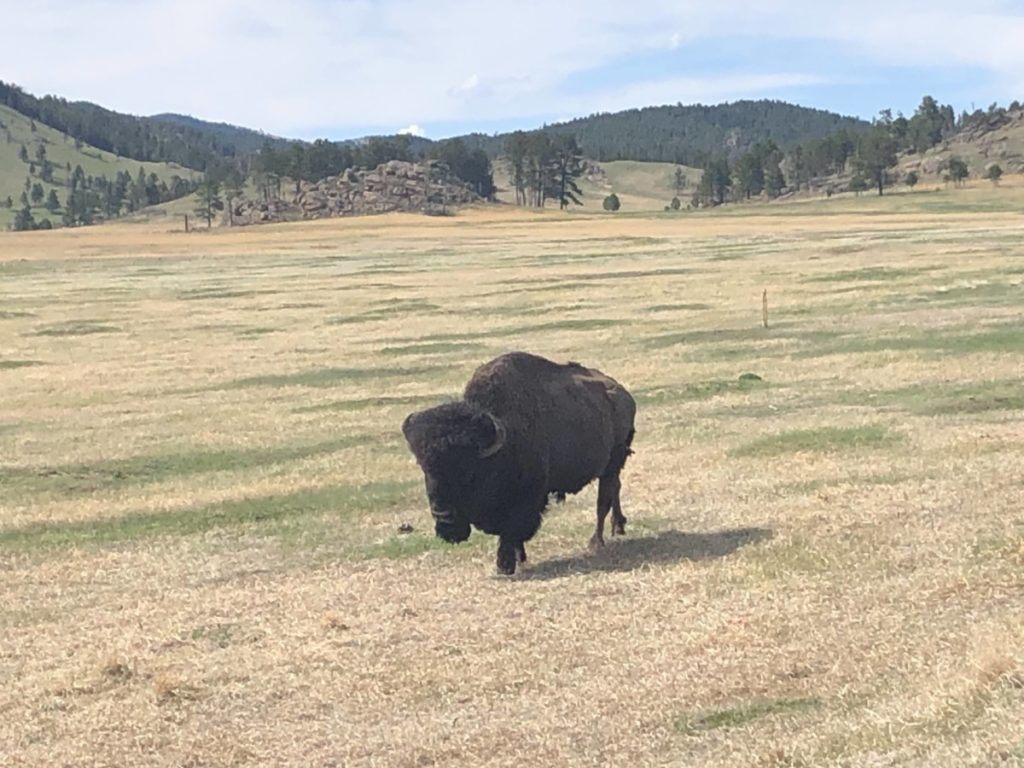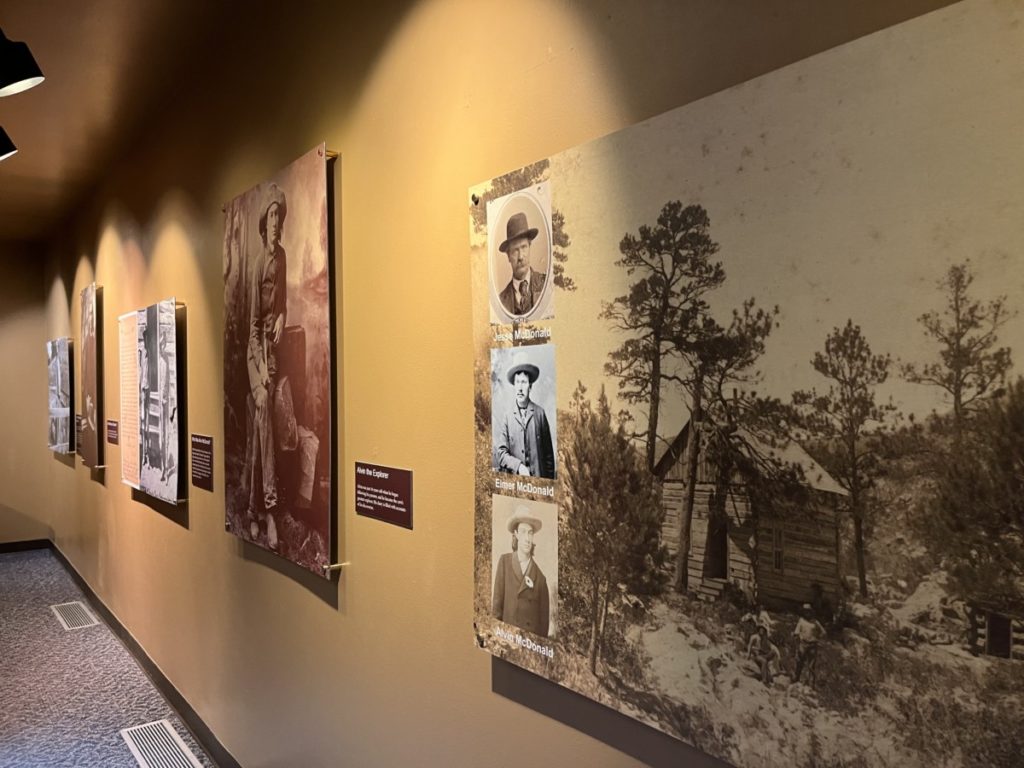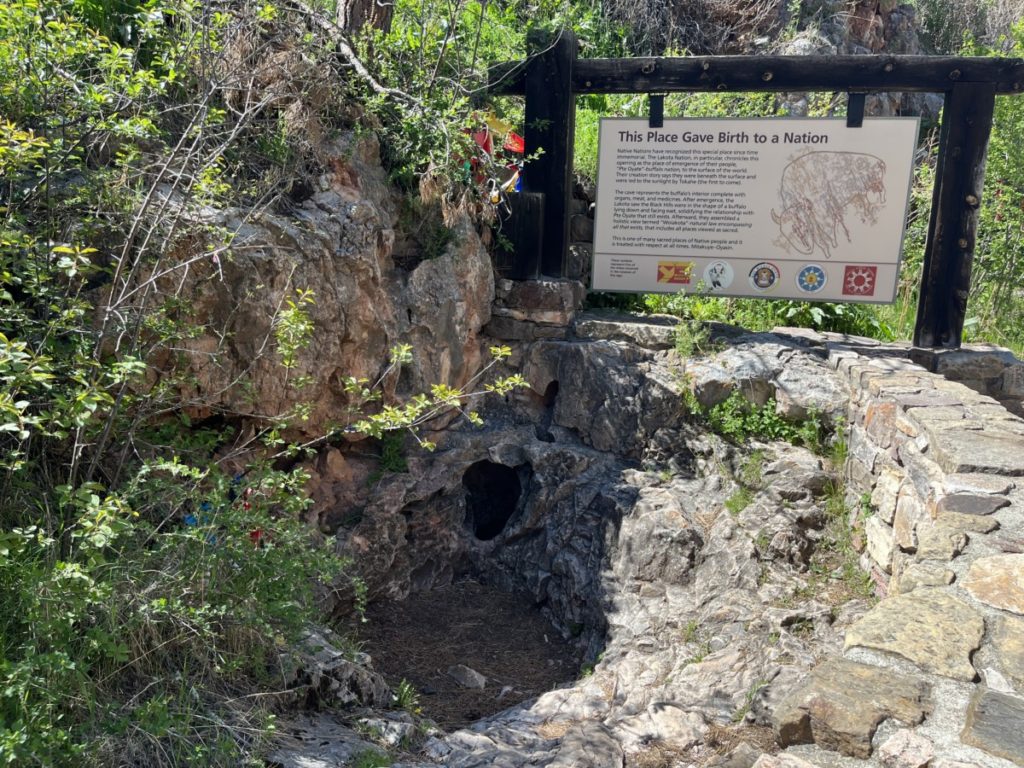The cave system at Wind Cave National Park spans over 150 miles, making it the third-longest cave in the United States. Cave explorers continue to map out new passages and some believe it may eventually connect to Jewel Cave National Monument (the country’s second-longest cave system) nearby. In 2019, the elevator to the cave floor broke and all guided ranger tours ceased operations for 21 months.
The Park
Located south of Custer State Park in the Black Hills of southwestern South Dakota, Wind Cave became the country’s eighth National Park in 1903 and the first park to protect a cave. Although it encompasses over 28,000 acres, only two paved roads (US Hwy 385 and SD 87) go through the park.
Wind Cave consists of two parks in one. In addition to containing miles and miles of surveyed cave passages, the surface area boasts wildlife, prairie grasslands, and trails worthy of a visit. Because of time constraints, we only visited the surface area of the park.
Surface Area of Wind Cave
Driving through Wind Cave NP, visitors are almost guaranteed to see bison roaming around. It’s no wonder as approximately 400 bison call the area home. However, that wasn’t always the case.

In 1900, less than 1,000 bison existed in the US. To prevent the extinction of the species, the American Bison Society was founded in 1905 and helped create the Wind Cave National Game Preserve at the park in 1912. The preserve started with 14 bison transferred from the Bronx Zoo in 1913 and added an additional six bison from Yellowstone in 1916.
Due to the success with bison, the preserve added elk and pronghorn sheep that were also in danger of extinction. Today’s bison, elk, and pronghorn sheep population descend from these original animals. Also, prairie dog towns reside near the roads. We stopped to look at the prairie dogs standing at attention outside their burrows. One little guy came out to the road and appeared to want to hop in the car with us!

Visitor Center
We stopped at the visitor center and confirmed cave tours were sold out for the day. Although visitors can purchase cave tour reservations in advance at recreation.gov, the park holds back 50% of the tickets for in-person purchases. Since we had booked a tour at Jewel Cave for a few days later, we didn’t book tickets at Wind Cave.

We walked around the exhibits detailing the park’s history. One of the most significant contributors to the cave’s success was Alvin McDonald. His father JD McDonald built a cabin at the entrance when he was manager for the South Dakota Mining Company. Alvin explored eight miles of the cave and named many of the rooms, as well as led tours of the cave before his untimely death in 1893.

Due to disputes regarding ownership of the cave throughout the 1890s, the US government took an interest in protecting the cave. They turned it into the eighth national park in 1903 and charged 50 cents for tours.
Natural Entrance of the Cave
The ranger recommended we walk to the cave’s natural entrance. This was the site where Tom and Jesse Bingham heard a whistling sound in 1881. Approaching the small opening, the force of the wind supposedly blew off their hats. A few days later, they returned to the spot. The wind no longer blew out of the opening, but rather, sucked air in.

Situated behind the visitor center, the opening blew the cool wind out at us. I was surprised at the force of it. Back at the visitor center, the ranger explained that the cave is always breathing. When barometric pressure drops outside, the cave blows air out to re-establish equilibrium. Likewise, if the outside air pressure is high, air comes into the cave. The ranger predicted rain since the barometric pressure had dropped. Sure enough, we had rain that evening!
Trails
The ranger also recommended two short trails. The 1-mile Rankin Ridge Trail takes hikers to the highest point in the park to a fire tower. The 1-mile Prairie Vista trail begins at the visitor center and winds among the prairie grass. We started the latter trail, but because we’d had a full day visiting Mt. Rushmore and Custer State Park, our kids wanted to turn back.


Conclusion
Wind Cave is worth a visit even if you don’t explore the cave. In addition to seeing the natural entrance to the cave, the surface area provides plenty of opportunities to see wildlife and offers 30 miles of hiking trails ranging from easy to strenuous. There are no entrance fees to the park and the visitor center provides a small museum, restrooms, and water fountains.
For more information about the park, click here.
